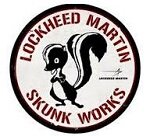Lean Product & Process Development Results
Since the resurgence of LPPD (Lean Product & Process Development) it has only been applied by the most forward thinking businesses, threatening their competitors (to the point of bankruptcy as seen in the auto industry). Several of these have stemmed from its evolution within Toyota.
For example, Ward’s work in design automation spurred interest in finding out whether any human engineers used set based design, which he discovered at Toyota. Companies started taking interest in these methods and Ward’s consulting.
A lean thinker himself, he noted his constraints from commercial airline routes & schedules and purchased an airplane better serve clients by improving his ability to travel between client sites. HP’s printer division was receiving his coaching, and on the way to provide a workshop a fateful crash occurred. It would be interesting to find out if HP still uses what they were learning.
Companies have been slow to adopt current practices, despite results available from them that eclipse conventional development practices which can be:
Fourfold reduction in development time & resources
Reducing the risk of quality problems, schedule & cost overruns, and failed product up to 10
Up to a tenfold increase innovation
Reuse of production systems & parts, slashing/dropping/felling capital costs and improving quality
“one company piloted some of the above principles on one of their key projects and was able to reduce the project time from 24 to 16 months, with less than half the engineering changes, while meeting their quality and cost goals.”
http://www.industryweek.com/blog/lean-product-and-process-development
“It is possible to manage, standardize and continuously improve the product development process as long as there is a solid understanding of, and allowances are made for, those characteristics of the product development environment that are indeed unique. Adler's 1998 research on the product development process has shown that achieving traditional manufacturing process improvement goals such as reducing variation, relieving process bottlenecks, eliminating rework, and managing capacity, can reduce development times by as much as 30% to 50%.”
http://www.sae.org/manufacturing/lean/column/leanfeb02.htm
Some examples here (to be posted)






















